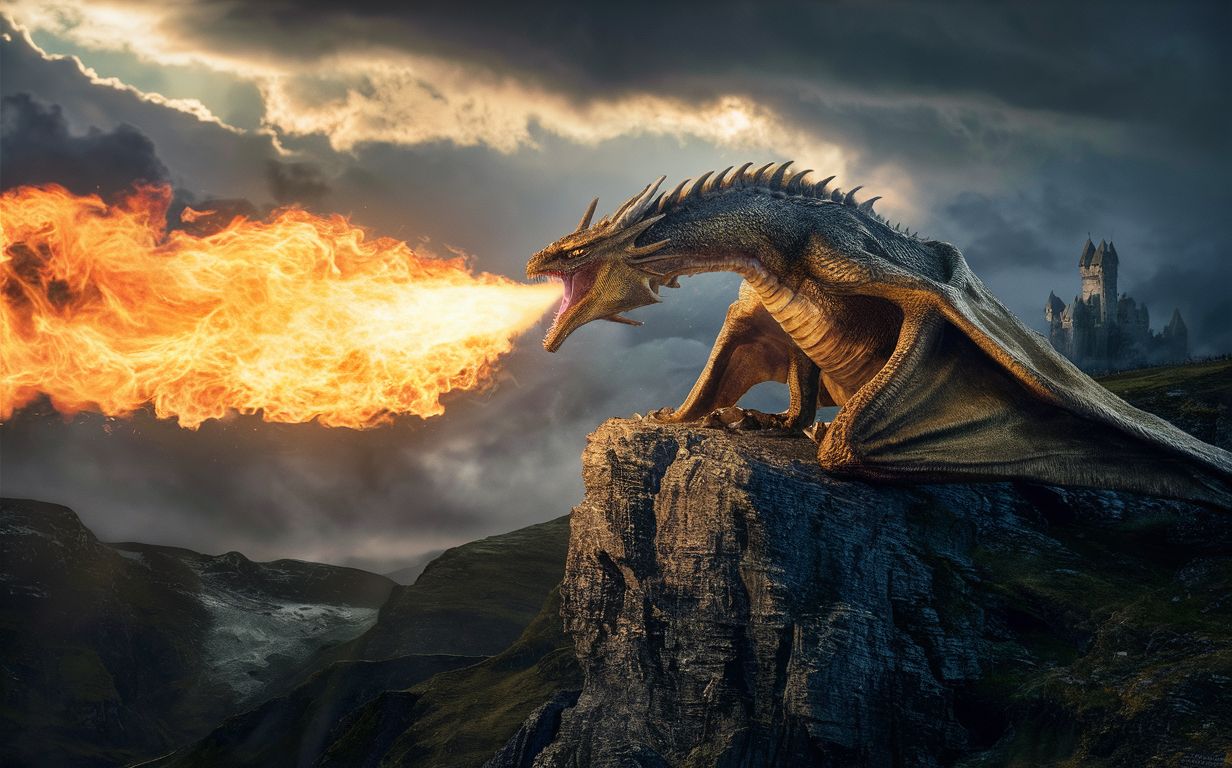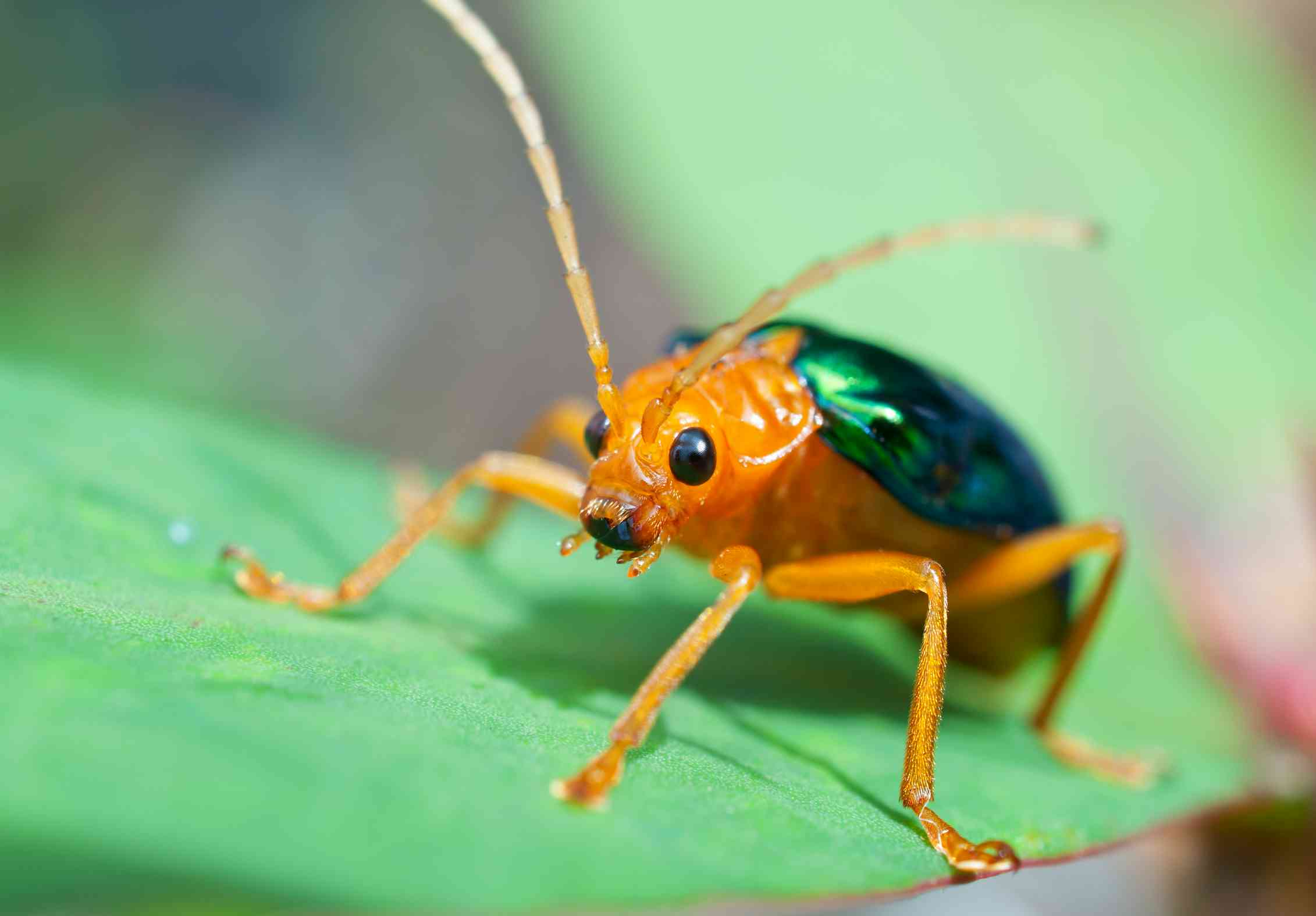If dragons existed, how could they breathe fire?
Published by Adrien,
Source: The Conversation under Creative Commons license
Other Languages: FR, DE, ES, PT
Source: The Conversation under Creative Commons license
Other Languages: FR, DE, ES, PT
Follow us on Google News (click on ☆)
In the fantastical land of Westeros, imagined by George R.R. Martin and brought to the screen in Game of Thrones and House of the Dragon, the spectacle of fire-breathing dragons captivates audiences through a clever blend of myth and fantasy. For me at least, it also sparks a scientific curiosity.

The images of dragons unleashing torrents of flames in the new season of House of the Dragon got me thinking: if dragons existed, what biological mechanisms and chemical reactions could they use in the real world?
But first, a quick chemistry lesson. To ignite and sustain a flame, we need three components: a fuel, an oxidizing agent - usually the oxygen in the air - and a source of heat to initiate and sustain the combustion.
Let's start with the fuel. Methane could be a candidate. Animals produce it during digestion. Images of Westeros show that dragons readily eat sheep. However, our methane-fed dragons would need a diet and digestive system more akin to that of a cow to produce enough gas to burn down a city.
Storing sufficient quantities of methane also poses a problem. A typical methane bottle can be designed for a pressure of 150 atmospheres, while even a bloated intestine can only tolerate a little over one atmosphere. There is no biological basis for terrestrial animals to store gases at high pressure.
A better solution would be a liquid. Ethanol could be an option. Perhaps our dragons have a fermentation tank of yeast in their guts, or they could have a metabolic system similar to the Cyprinodon diabolis fish, which lives in the hot springs of Nevada. In low oxygen conditions, these fish adopt a form of respiration that produces ethanol.

You won't want to tussle with a fulmar.
Giedriius/Shutterstock
However, storage is once again a problem. Ethanol rapidly crosses biological membranes, and storing it at high concentrations and ready to deploy on the “dracarys” signal (which translates to “dragon fire” in the fictional High Valyrian language) would require otherworldly biology.
So, if we stick to explanations with at least one foot in real-world biology, my preferred option is something more like oil. As anyone who has accidentally set a frying pan on fire knows, it can produce formidable flames. There is a biological basis for this in fulmars.
These polar birds produce an energy-rich stomach oil that they regurgitate to feed their chicks. This oil also has a deterrent effect. When threatened, the fulmar vomits this sticky and foul-smelling oil on its predators. Fortunately, these birds have yet to figure out how to ignite their oil.
Fueling the flames
Now that we have a fuel source, let's focus on the oxidant. As with most fires, it will likely be oxygen. However, it will take more than the ambient air oxygen to generate a pressurized jet of burning oil hot enough to melt an iron throne. The oxygen must be well-mixed with the fuel. The more abundant the oxygen, the hotter the flame.
A dragon could draw inspiration from the chemistry used by bombardier beetles. These insects have developed reservoirs suited for storing hydrogen peroxide (the product used to bleach hair). When threatened, the beetle pushes the hydrogen peroxide into a vestibule containing enzymes that rapidly decompose it into water and oxygen.
This is an exothermic reaction, which transfers energy to the environment and, in this case, raises the temperature of the mixture to the boiling point. The reaction is so aggressive that it's sometimes used to propel rockets. The increased pressure caused by the rapid oxygen production and boiling water forces the noxious mixture out of a vent in the beetle's abdomen, aimed at its prey or predator.

Bombardier beetles store hydrogen peroxide in their bodies.
johannviloria/Shutterstock
If used by a dragon, this reaction has some interesting features. It would create the high pressure needed to fuel the jet of oil, the exothermic reaction would heat the oil, making it more combustible, and most importantly, it would generate oxygen to fuel the combustion reaction.
All the dragon needs is a biological equivalent of a gasoline engine carburetor to mix the oil with oxygen and create an explosive mixture. As a bonus, the erupting mixture would probably form a fine mist of oil droplets, much like an aerosol, which would ignite even better.
The spark
Finally, we need a spark to ignite the mixture. For this, I would suggest that dragons have developed an electric organ similar to that found in many fish, especially electric eels.
These organs can generate brief pulses of up to 600 volts, enough to create a spark in the air. If these sparks form on ducts at the back of a dragon's mouth, they could ignite the high-pressure jet of oil and oxygen.
Even though we will never see a dragon unleashing torrents of flames outside the realm of fiction, it is interesting to think about the science behind the fantasy. So, the next time you see a Targaryen command “dracarys,” consider the biology behind that magical inferno.